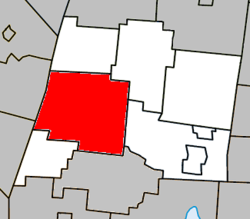
Estrie is an administrative region of Quebec that comprises the Eastern Townships. Estrie, a French neologism, was coined as a derivative of est, "east". Originally settled by anglophones, today it is about 90 per cent francophone. Anglophones are concentrated in Lennoxville, home of the region's only English-speaking university, Bishop's University. The Eastern Townships School Board runs 20 elementary schools, three high schools, and a learning centre.
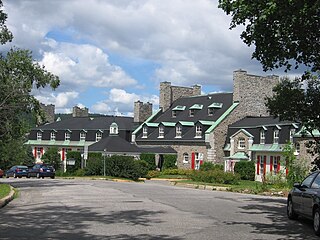
Baie-Comeau is a city located approximately 420 km (260 mi) north-east of Quebec City in the Côte-Nord region of the province of Quebec, Canada. It is located on the shores of the Saint Lawrence River near the mouth of the Manicouagan River, and is the seat of Manicouagan Regional County Municipality.

La Haute-Yamaska is a regional county municipality in the Estrie region of Quebec, Canada. Its seat is Granby.

La Tuque is a city located in north-central Quebec, Canada, on the Saint-Maurice River, between Trois-Rivières and Chambord. The population was 11,129 at the 2021 Canadian census, most of which live within the urban area. At over 28,000 km2 (11,000 sq mi), it is the largest city in Canada by area.

Mékinac is a regional county municipality (RCM) of 5,607 km2 located in the administrative region of Mauricie, along the Saint-Maurice River, which also crosses the RCM from one end to the other, and the Matawin River, a tributary of the Saint-Maurice. Located in the province of Quebec, Canada.

Dolbeau-Mistassini is a town in northern Quebec, Canada, at the confluence of the Mistassibi River, Riviere aux Rats and the Mistassini River, on Lac Saint-Jean. Dolbeau-Mistassini is in the Maria-Chapdelaine Regional County Municipality and is the commercial hub of Lac-St-Jean with big stores and shopping centres.

Cowansville is a town in south-central Quebec, Canada, located on Lac Davignon 20 kilometres (12 mi) north of the U.S. border. It is the seat of Brome-Missisquoi, a regional county municipality. The population as of the Canada 2021 Census was 15,234.

The Town of Brome Lake is a town in southern Quebec, Canada. The population as of the Canada 2011 Census was 5,609. Tourism is a major industry in the village of Knowlton because of skiing in the winter, lake activities in summer, and autumn leaf colour.

Bromont is a city in southern Quebec, Canada, at the base of Mont Brome; it is in the Brome-Missisquoi Regional County Municipality. The Bromont area and its resort, Ski Bromont, is well known as a tourist destination for its downhill skiing, mountain biking, BMX-riding and water slides. It also features golf and equestrian events in moderate weather. Bromont also boasts a high-tech industrial park, which includes IBM, General Electric, and Teledyne DALSA. Bromont Airport serves the region.
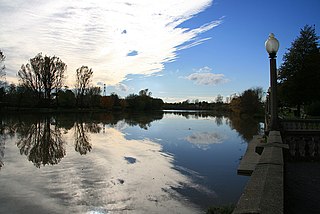
The Yamaska River is a river in southern Quebec, Canada.
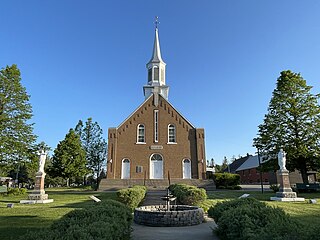
Notre-Dame-du-Mont-Carmel in the Mauricie region of the province of Quebec in Canada.

Hérouxville is a parish municipality in the Mékinac Regional County Municipality in the administrative region of Mauricie, in the province of Quebec, Canada. Its watershed is mainly part of the Batiscanie.
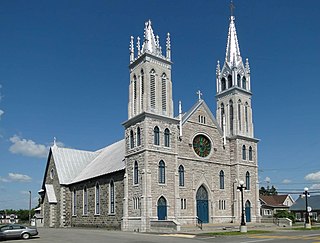
Saint-Narcisse is a parish municipality located in the regional county municipality (MRC) Chenaux, in the administrative region of Mauricie, in the province of Quebec, in Canada. Located on the North Shore of the Saint Lawrence River, about 30 km (19 mi) from downtown Trois-Rivières, the parish of Saint-Narcisse is the heart of the Mauricie region.

Shefford is a township municipality located in the province of Quebec. It is part of the Haute-Yamaska Regional County Municipality in the administrative area of Estrie. The population as of the Canada 2021 Census was 7,253. The township completely encircles the city of Waterloo and the city of Warden.

Sainte-Anne-du-Lac is a municipality and village in the Laurentides region of Quebec, Canada, part of the Antoine-Labelle Regional County Municipality.

Roxton Pond is a municipality in the Canadian province of Quebec, located within La Haute-Yamaska Regional County Municipality. The population as of the 2021 Canadian Census was 4,224. The municipality was created in 1997 with the merger of the Parish and the Village of Roxton Pond.

Saint-Alphonse-de-Granby is a municipality in the Canadian province of Quebec, located within La Haute-Yamaska Regional County Municipality. The population as of the 2011 Canadian Census was 3,125.
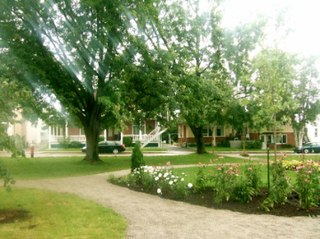
Métabetchouan–Lac-à-la-Croix is a city in Quebec, Canada, in the Saguenay–Lac-Saint-Jean region.

Lac-Pikauba is an unorganized territory in the Capitale-Nationale region of Quebec, Canada. It is a large, unpopulated, undeveloped territory that makes up two-thirds of the Charlevoix Regional County Municipality.
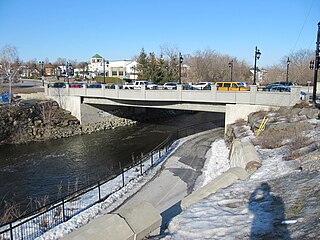
The North Yamaska river is a tributary of the Yamaska river. It flows over 47.8 kilometres (29.7 mi) on the south shore of the Saint Lawrence river in Quebec, Canada and passes through five municipalities, some of them sourcing their fresh water from it.

